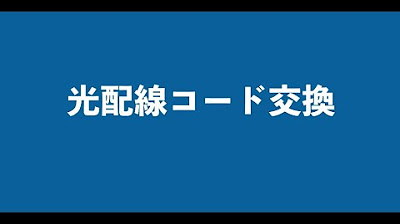USB Vs Bluetooth (PS5 DualSense Delay) - 120Hz | 60Hz
Summary
TLDRビデオでは、プレイステーション5のコントローラーをBluetoothで接続するか、USBケーブルで接続するかの比較が行われています。入力ラグ、つまりボタンを押してからゲームに反映されるまでの時間を測定し、Bluetoothで接続した場合は平均11.5ミリ秒、USBケーブルで接続した場合は0.5ミリ秒未満の遅延が見られました。Bluetooth接続では、Wi-Fiネットワークの近くにあると遅延が増加する可能性があるため、安定した入力ラグが必要な場合はUSBケーブルを使用することが推奨されています。ただし、手や部屋が熱くなると、ケーブル接続によるオーバーヒートを防ぐためには注意が必要です。また、バッテリーの劣化を防ぐためにも、週に一度はケーブルで充電することが重要です。
Takeaways
- 🎮 ゲームの入力ラグとは、コントローラーのボタンを押してからゲームに影響が及ぶまでの時間のことです。
- 📶 Bluetoothで接続した場合、入力ラグは平均11ms程度で、FPS120でのテストで11.5msの遅延が観測されました。
- 🔌 USBケーブルで接続した場合、入力ラグは0.4ms未満で、Bluetoothよりも大幅に低減されます。
- 🛠️ テストでは、オーバーウォッチ2とバイオハザード4の2つのゲームを使用して、入力ラグを測定しました。
- 📈 入力ラグが小さいほど、シューティングゲームなどのマルチプレイヤーゲームで有利です。
- 📶 Bluetooth接続では、Wi-Fiネットワークの近傍に依存して遅延が大きくなる可能性があるため、安定した入力ラグが必要な場合はUSBケーブルを使用することが推奨されます。
- 🔋 USBケーブルで接続する場合は、手や部屋が温かすぎたり湿気がある場合は使用しない方が安全です。
- 🔌 PS5の設定で「USBケーブルを使用」を選択することで、ケーブル接続時の入力ラグを最小限に抑えることができます。
- 🔋 バッテリーの健康を保つために、週に一度はケーブルを接続して完全に充電することが推奨されます。
- 📈 USBケーブル接続は、安定した入力ラグとジョータなく最適な選択肢とされています。
- 👀 他の要因も入力ラグに影響を与える可能性があるため、詳細は次のビデオで学ぶことができます。
Q & A
入力ラグとは何ですか?
-入力ラグとは、ゲームパッドのボタンを押してからゲームに影響が及ぶまでの時間を指します。
BluetoothとUSBケーブルで接続した場合の入力ラグの違いは何ですか?
-Bluetoothで接続した場合、入力ラグは平均11msでしたが、USBケーブルで接続した場合は0.4ms未満となり、Bluetoothよりも遅延が少なくなります。
入力ラグがゲームに与える影響は何ですか?
-入力ラグは、特にシューティングゲームのマルチプレイヤーで重要です。入力ラグが小さいほど、ゲームの操作がスムーズになり、プレイヤーはより迅速かつ正確に反応できます。
ゲーム機の近くにWi-Fiネットワークがある場合、入力ラグにどのような影響がありますか?
-ゲーム機の近くにWi-Fiネットワークがあると、コントローラーとゲーム機間の接続に影響を与える可能性があり、入力ラグが最大30msまで増加する可能性があります。
USBケーブルで接続する際には、どのような設定が必要ですか?
-PS5の設定で、コントローラーセクションに移動し、ケーブルで接続している間に「USBケーブルを使用」を選択する必要があります。
USBケーブルで接続する際には、注意すべき点は何ですか?
-USBケーブルで接続する際には、部屋が暑すぎる場合や手が温かく湿っている場合は使用しない方がよいです。また、バッテリーを一度に乾かしてからゲーム機に接続して完全に充電することが、バッテリーセルの劣化を防ぐのに役立ちます。
Bluetoothで接続した場合の入力ラグはどの程度ですか?
-Bluetoothで接続した場合の入力ラグは、平均で11ms程度です。これはストーリーゲームには問題ありませんが、マルチプレイヤーゲームでは遅延を感じる可能性があります。
入力ラグを測定する際に使用されたツールは何ですか?
-入力ラグを測定するために、DS4アプリケーションとキャプチャーカードを使用しました。また、OBSのエンコードによる遅延も考慮に入れました。
ゲームのフレームレートが変わると、入力ラグはどのように変動しますか?
-ゲームのフレームレートが変わると、入力ラグも変動します。例えば、オーバーウォッチ2では120FPSで11.5msの遅延が見られましたが、バイオハザード4では60FPSで10.5msの遅延が見られました。
入力ラグを減らすために、他の方法はありますか?
-はい、他にも入力ラグを最大24ms減らす方法があります。詳細は別のビデオで説明されています。
オーディオの質は、BluetoothまたはUSBケーブルで接続する際に変動しますか?
-はい、オーディオの質は接続方法によって変動する可能性があります。詳しい情報は別のビデオで説明されています。
Outlines

This section is available to paid users only. Please upgrade to access this part.
Upgrade NowMindmap

This section is available to paid users only. Please upgrade to access this part.
Upgrade NowKeywords

This section is available to paid users only. Please upgrade to access this part.
Upgrade NowHighlights

This section is available to paid users only. Please upgrade to access this part.
Upgrade NowTranscripts

This section is available to paid users only. Please upgrade to access this part.
Upgrade NowBrowse More Related Video

Balanced vs Unbalanced Audio | Do Balanced Cables Sound Better?

【設定・トラブルサポート】機器の交換方法 光配線コード

We Added A Powerful eGPU To The New Minisforum V3 Ryzen Tablet Now Its Crazy FAST

What glue is best for your camera leatherette? Testing some suggested adhesives for camera repair!

Best Input Buffer Explained - Rocket Science

RAG Evaluation (Document Relevance) | LangSmith Evaluations - Part 14
5.0 / 5 (0 votes)
